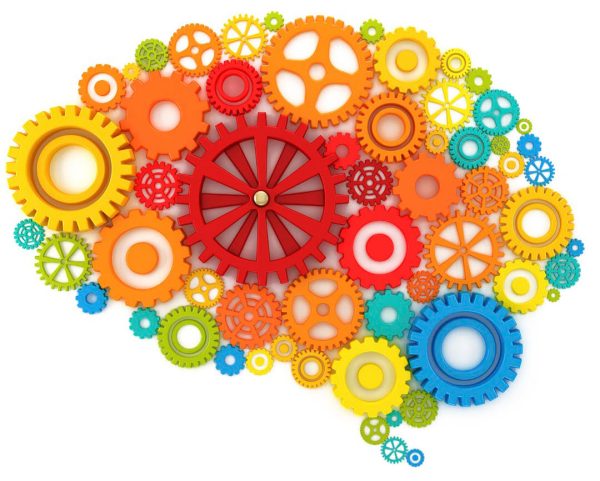The answer might surprise you. According to Dr. David A. Sousa, educational neuroscience consultant and award-winning author of Engaging the Rewired Brain, the answer is no … with a big qualifier.
No, technology doesn’t shorten students’ attention spans. Today’s learners are capable of focusing on one thing for just as long as children of previous generations. What technology is doing, however, is changing the way students use their brains.
If You’re Over Age 40, You’ll Get This
Remember doing a research paper as a kid? You had to go to the library and laboriously pore over the card catalogue (or another book-locating resource). Perhaps you had to ask a librarian for help. By the time you found the information you needed, you were so invested in the steps that led you to this victory, you felt committed to getting as much out of that particular book as possible.
You had to remember things. You had to write things down. On paper, even.
Today’s students have none of this. With a few clicks, they can go to Google, pull up the tidbit of information they need, copy it, and add it to a compilation of other relevant tidbits. If they forget (or even lose) the information, no worries-they can just Google it again.
Technology has made it so easy to quickly find information that students no longer feel the need to memorize information. They don’t store as much in their working memories because they don’t have to. Or maybe they just can’t.
Changes in Working Memory Capacity
Essentially, people are born with survival skills that they develop throughout childhood. Everyone is “prewired” with networks in their brains that enable them to gather information from the environment, assess it, and decide what to do with it, increasing their likelihood of staying alive by developing essential communication and social skills.
Parents have historically been the primary teachers of these enhanced skills, preparing children for successful interaction with the world. Today, says Sousa, technology is taking the place of parents in a lot of ways, and it’s teaching children that if something doesn’t interest them within a few seconds, it’s acceptable to just move onto something else.
Then there’s the impact on memory systems. In the 1950s, a psychologist named George Miller found that young children could store about five items in their working memories. By adolescence that number rose to about seven items. Although that has held up pretty well for the past 50 years, researchers have revisited the topic and found that technology appears to be lowering those numbers. The capacity of working memory seems to be decreasing.
Sousa addresses this in his book: “Students do have the ability to pay attention for a considerable length of time, if they wish to. The problem is that digital technology does not require it, so students have very little practice in sustained attention.”
Increasingly, students don’t need to remember information itself; they only need to remember where to find it and that requires much less of their working memories.
Is Technology Changing Students’ Brains?
Dr. Sousa’s answer to this one is yes. The human brain is constantly reorganizing itself as a result of input from the environment—a feature referred to as brain plasticity (or neuroplasticity). Over time, brains literally do change, and it is entirely possibly to change someone else’s brain.
This is important for all educators to understand because they’re much more than teachers-they’re brain changers, says Sousa. A teacher can change a student’s brain in a 40-minute class period, with more pronounced changes taking place after a week of instruction-and even more at the end of a unit.
It’s all environmental. Regardless of a student’s home situation, extracurricular activities, or attitude toward school, teachers significantly impact the environment that shapes learning and personality, but they’re also up against a formidable force. According to Sousa, the thing that has had the greatest environmental impact on students’ brain is none of the above; it’s technology.
Working With the Rewired Brain
This news may not be all bad. Technology helps students learn in some really important ways. Timely ways. Young people want to interact. The nature of technology makes it possible to get their attention and increase their ability to preview and identify critical content, retain information, increase interest, and even raise student achievement. Dr. Sousa shows us how, using research and strategies, educators can work with brains that are rewired and addicted to technology.
So What Can Teachers (and Parents) Do?
This all poses quite a challenge for teachers. How can you ensure that students learn the critical content when they are accustomed to storing only a few items in their working memories?
Believe it or not, the shifts in the educational landscape may be a light at the end of the tunnel. Rigorous new standards, such as Common Core, put a much greater emphasis on skill development than content acquisition. It’s more about how to learn than what to learn. Standards-based instruction may not make sense to a lot of adults, but it may be exactly what today’s students need to thrive in adulthood.
Here’s why. Employers want to hire people who know how to learn. Information is always changing, so knowledge is quickly outdated. The global workplace now demands people with skills more than people with knowledge.
Will Technology Replace Teachers Entirely?
Not in the ways that matter. Teachers serve as role models. They give advice. They inspire and encourage students. They offer the human relationship that students need to set and achieve goals. They value and understand students. Machines can’t do any of this, but that doesn’t mean they play no role in learning, according to Sousa, who says, “I do believe that teachers who use technology will replace teachers who do not.”



